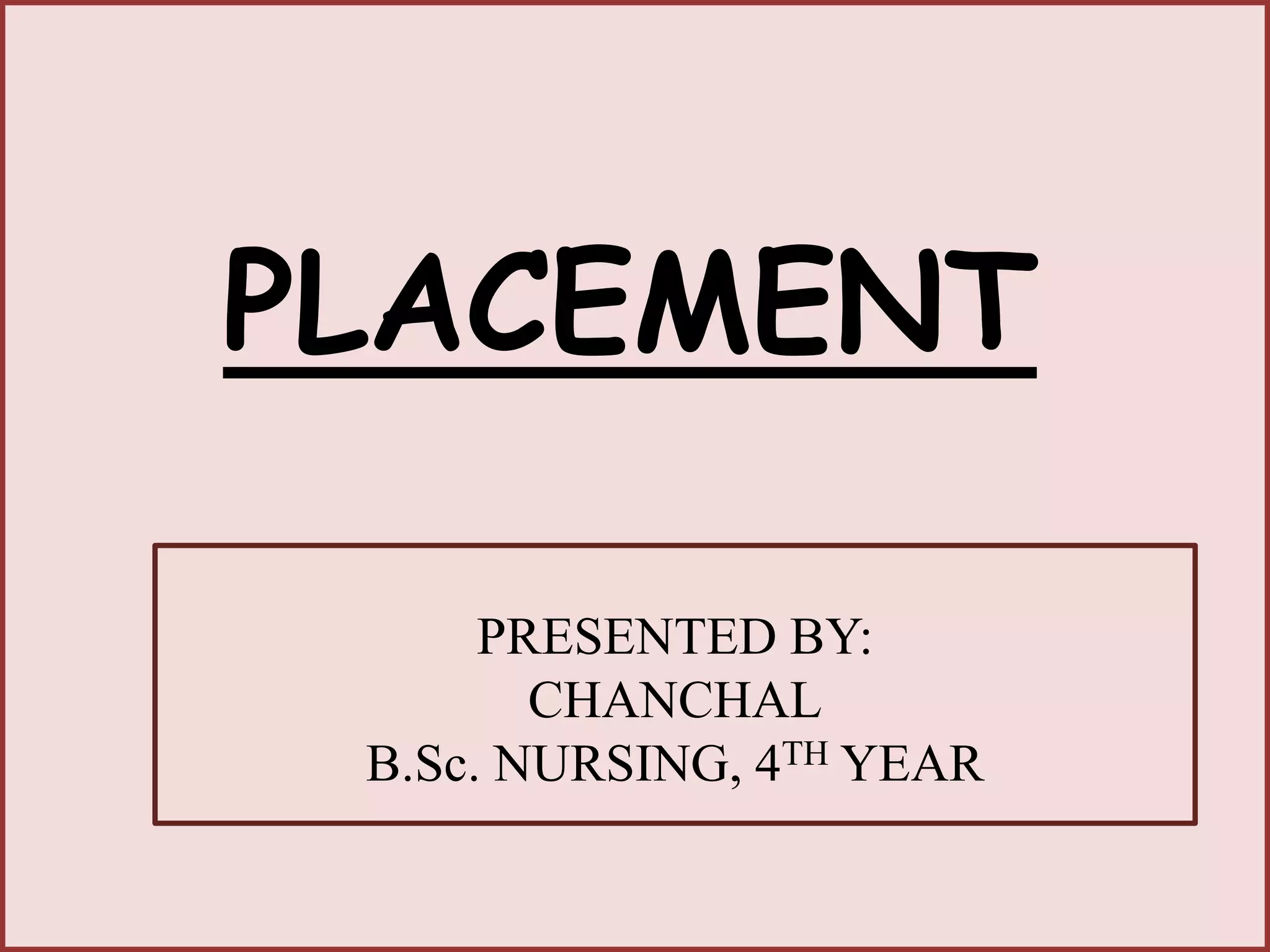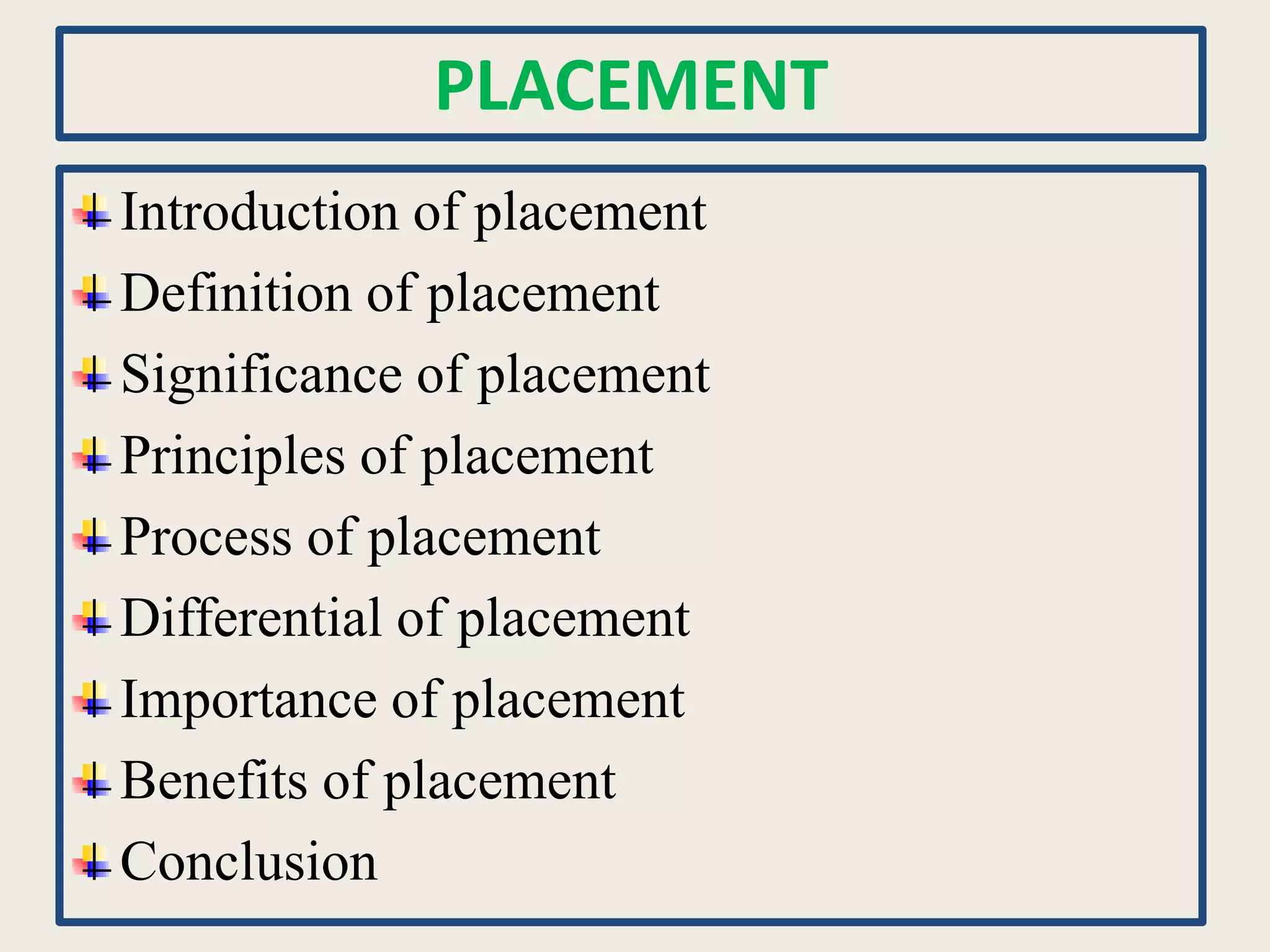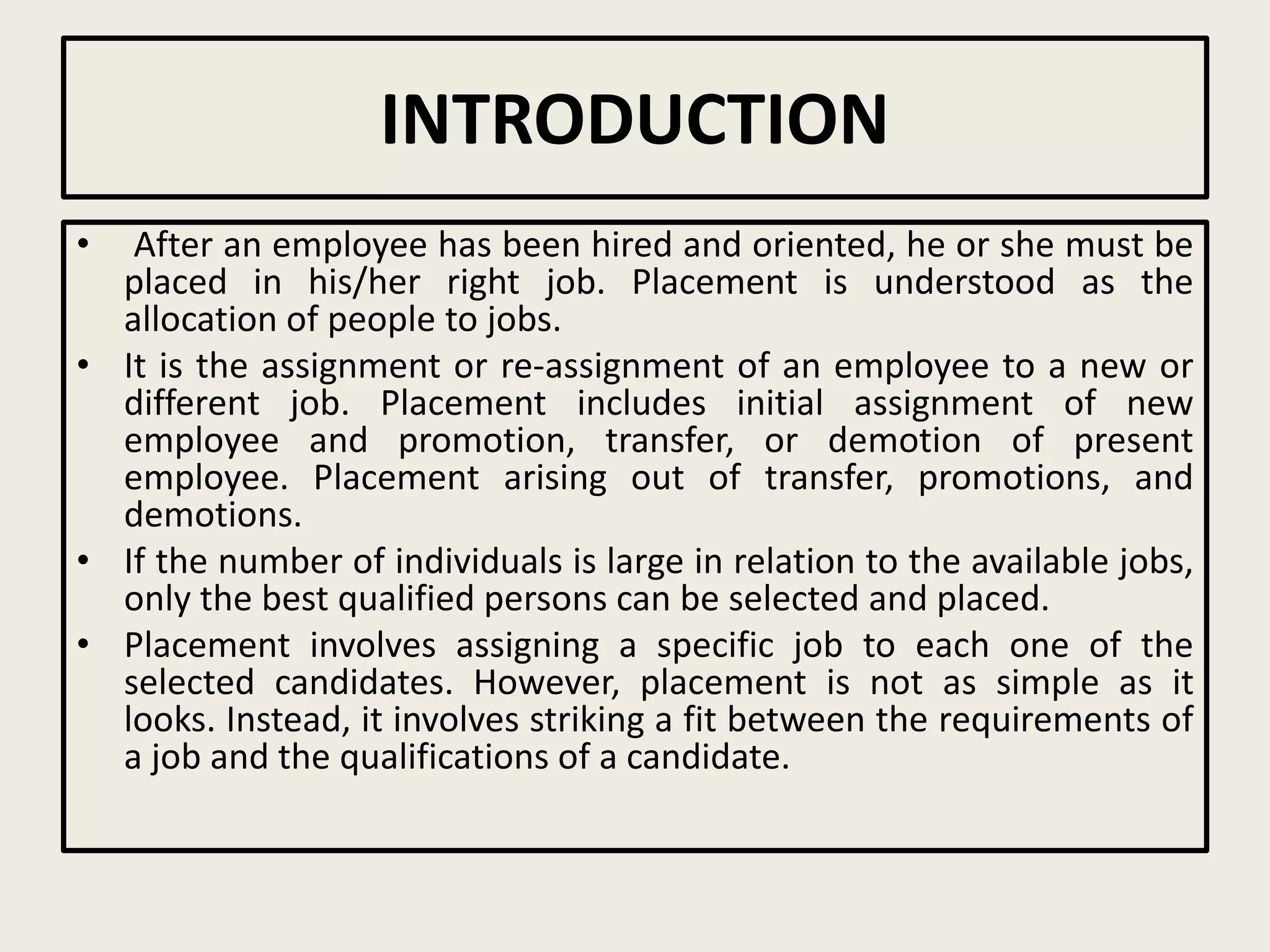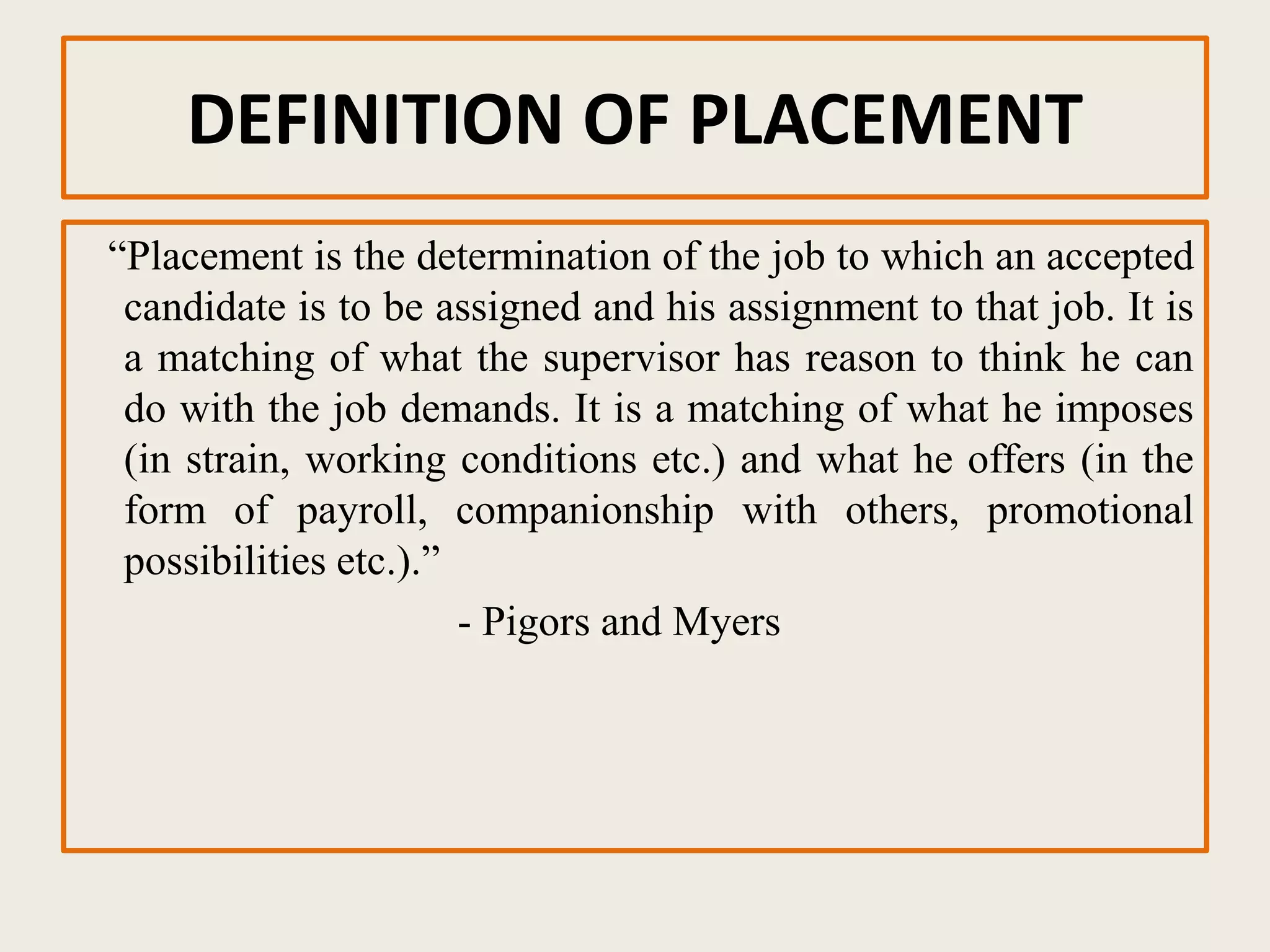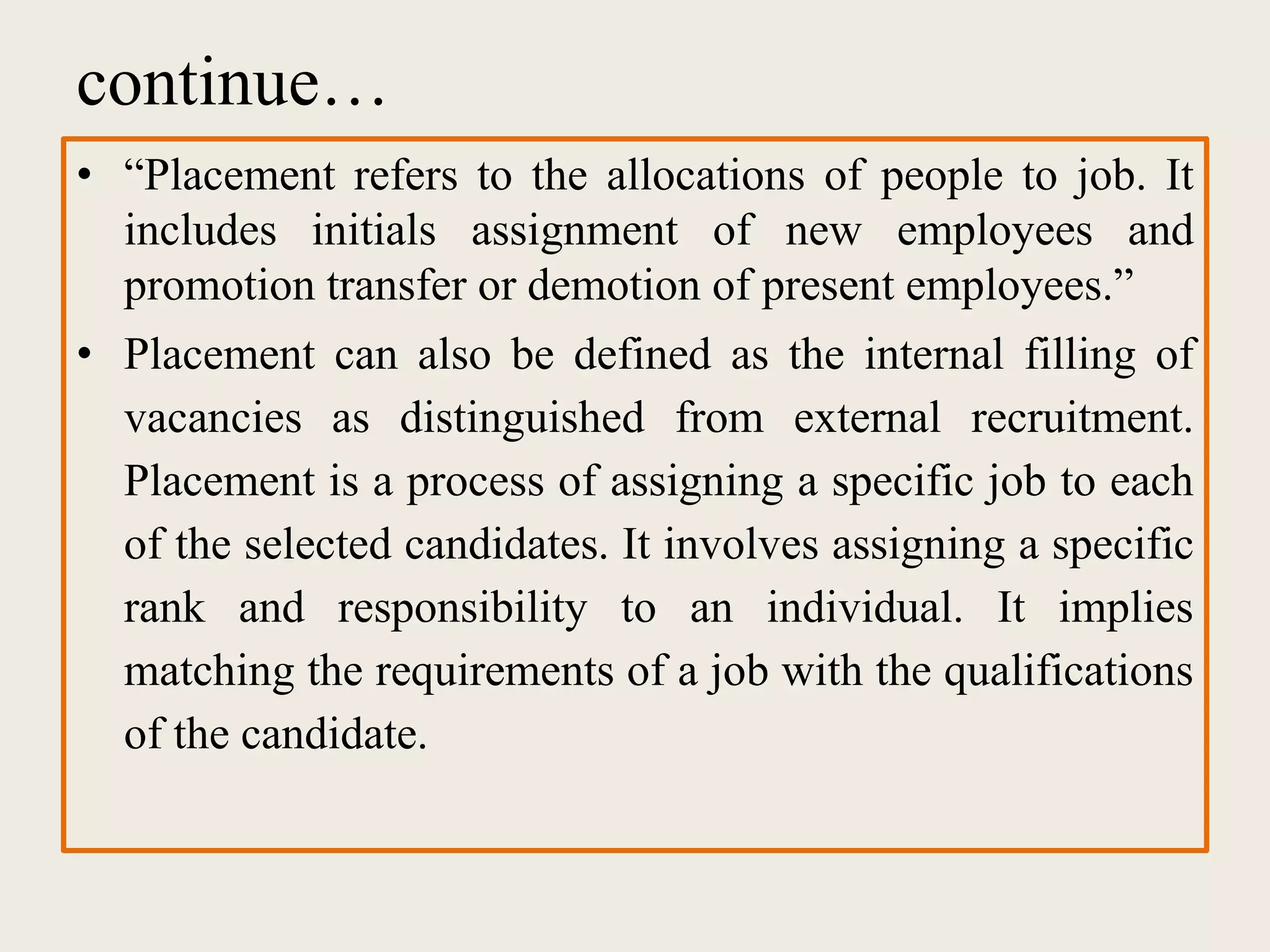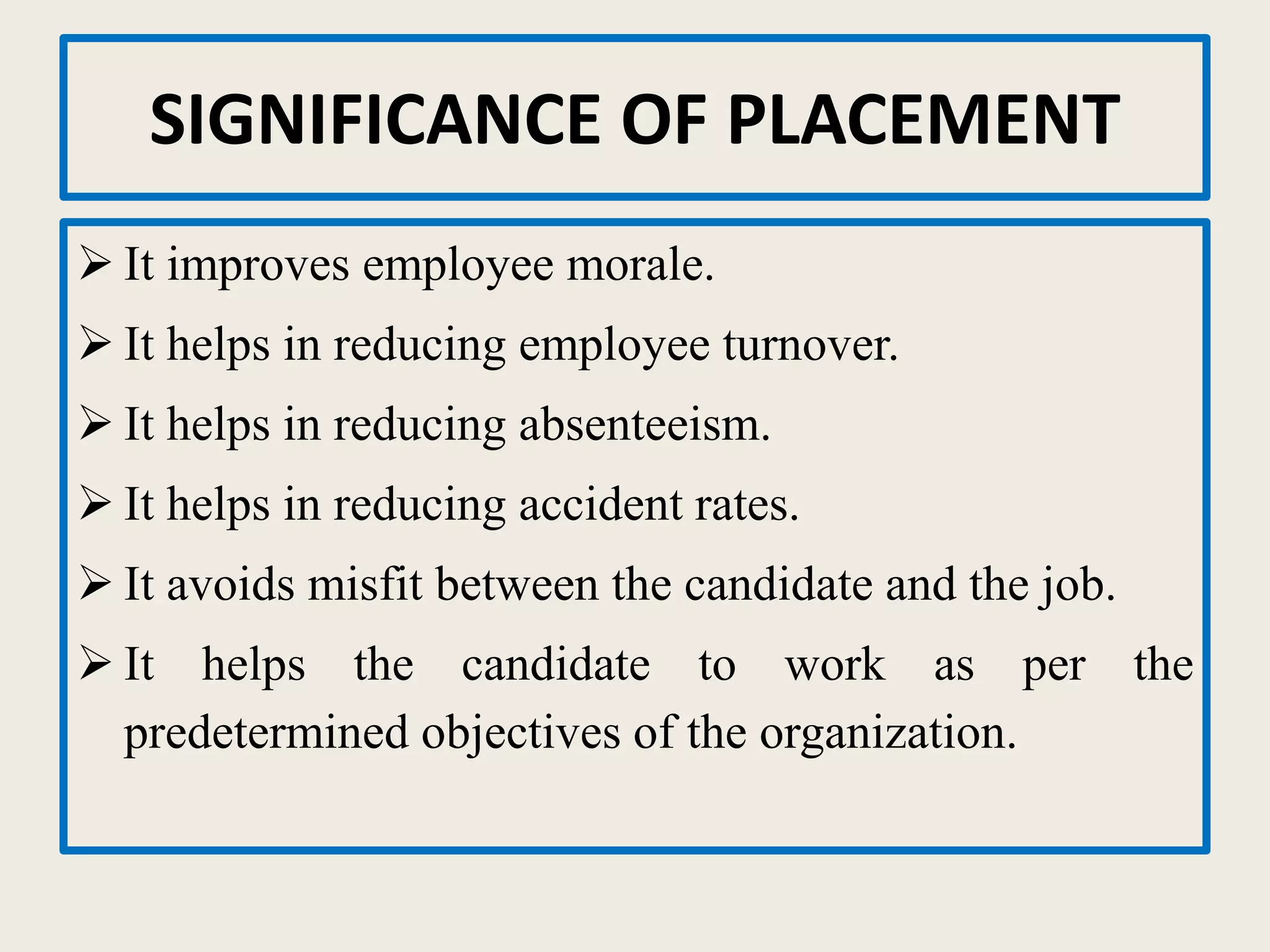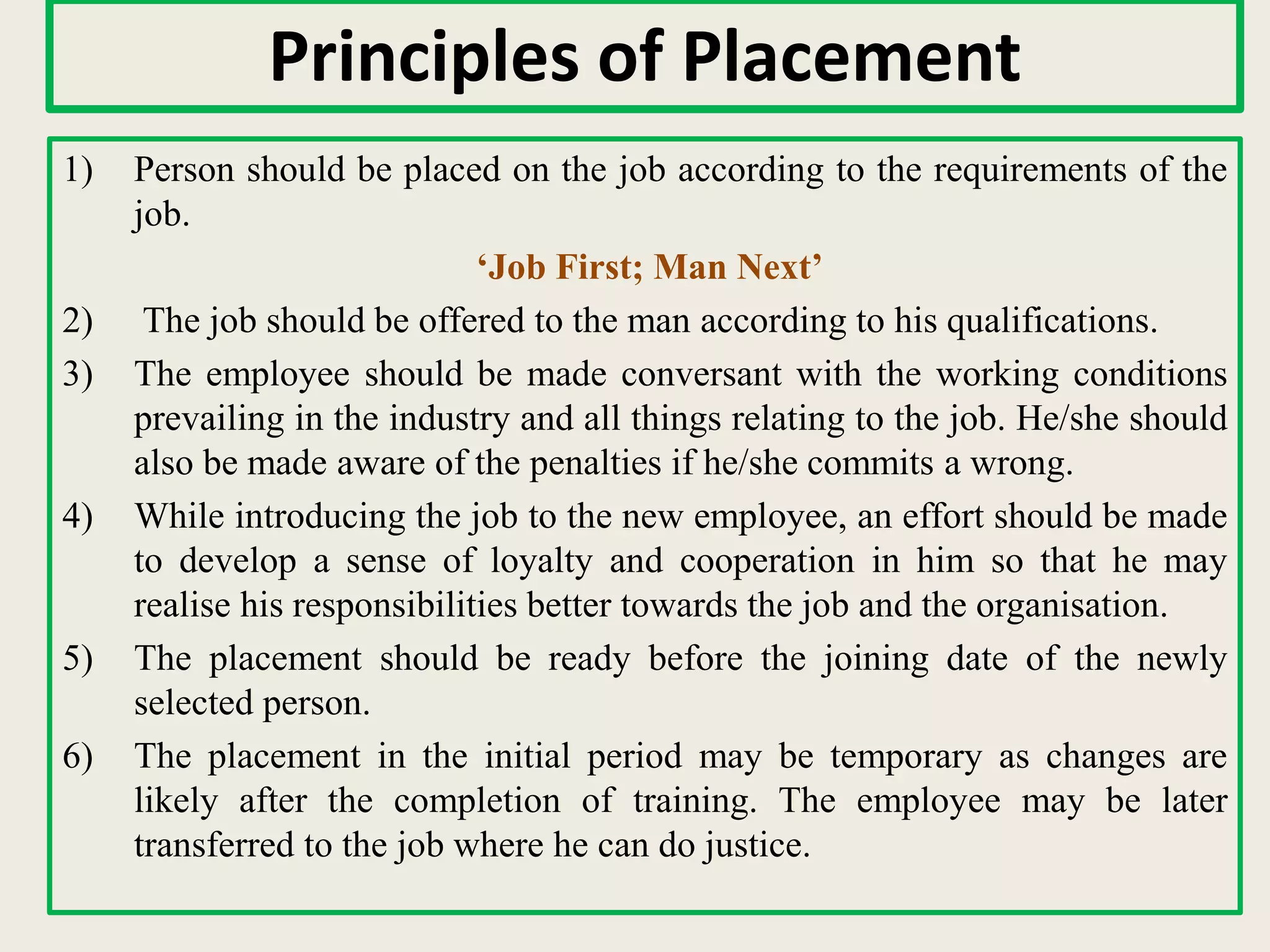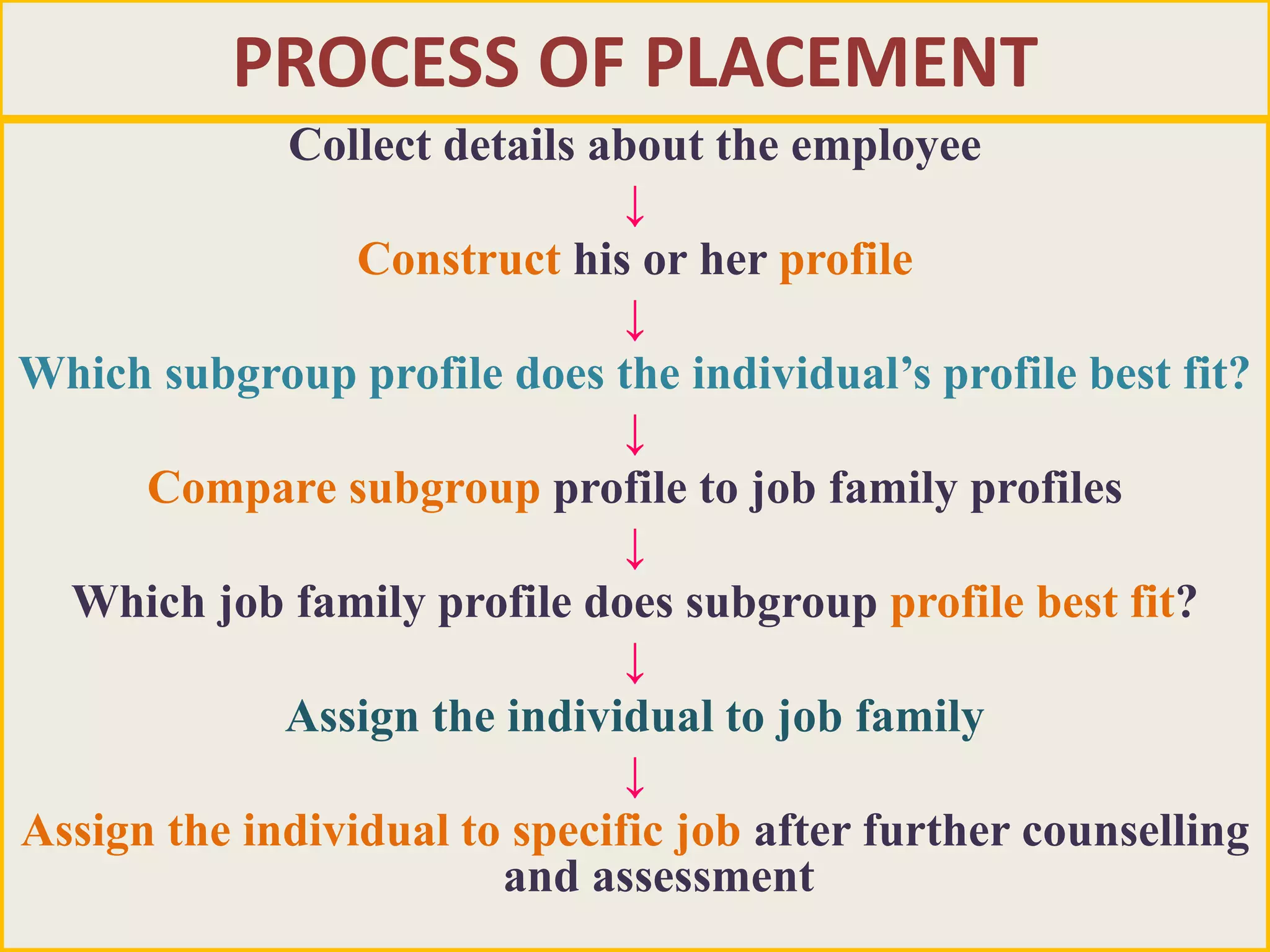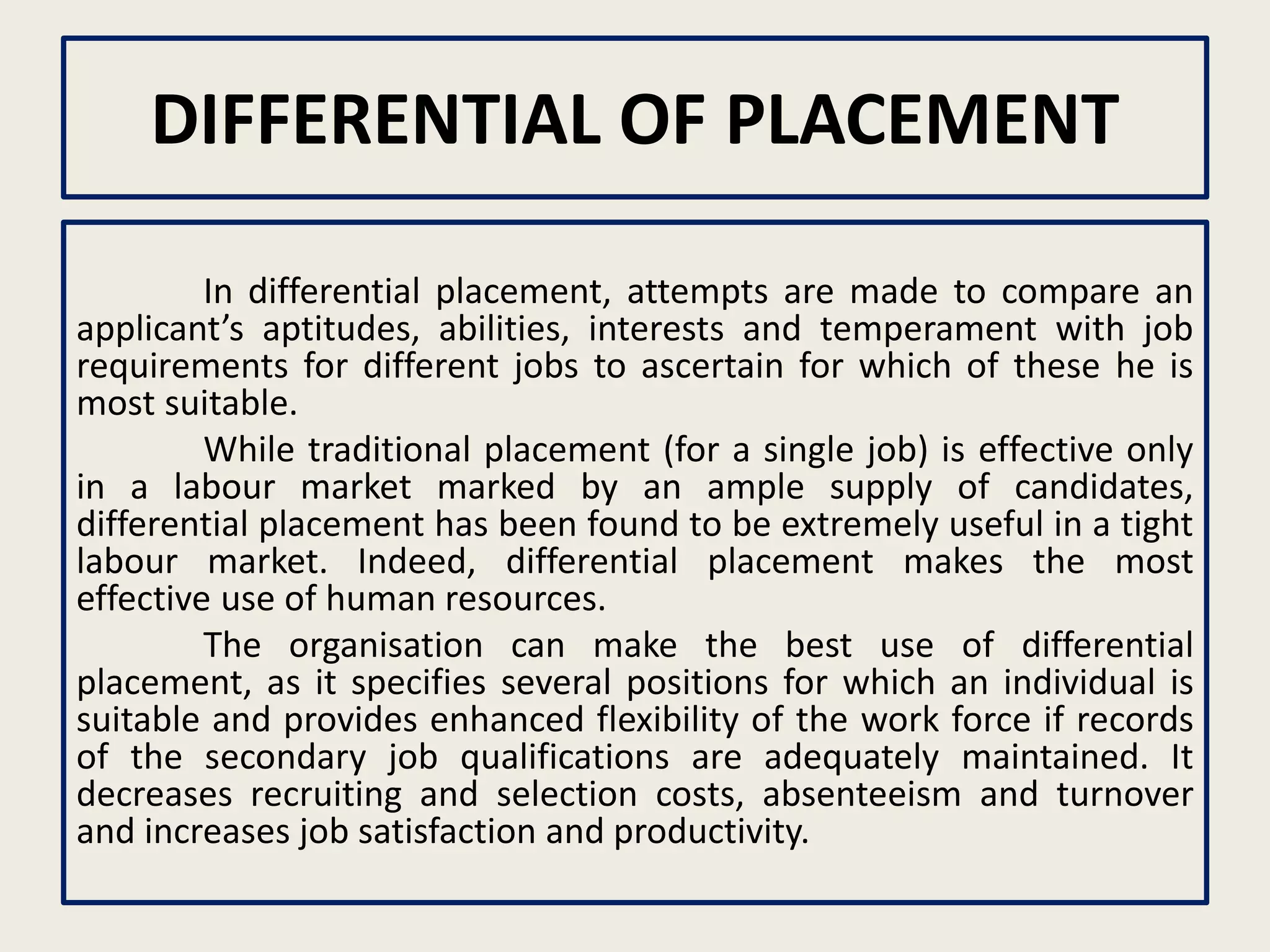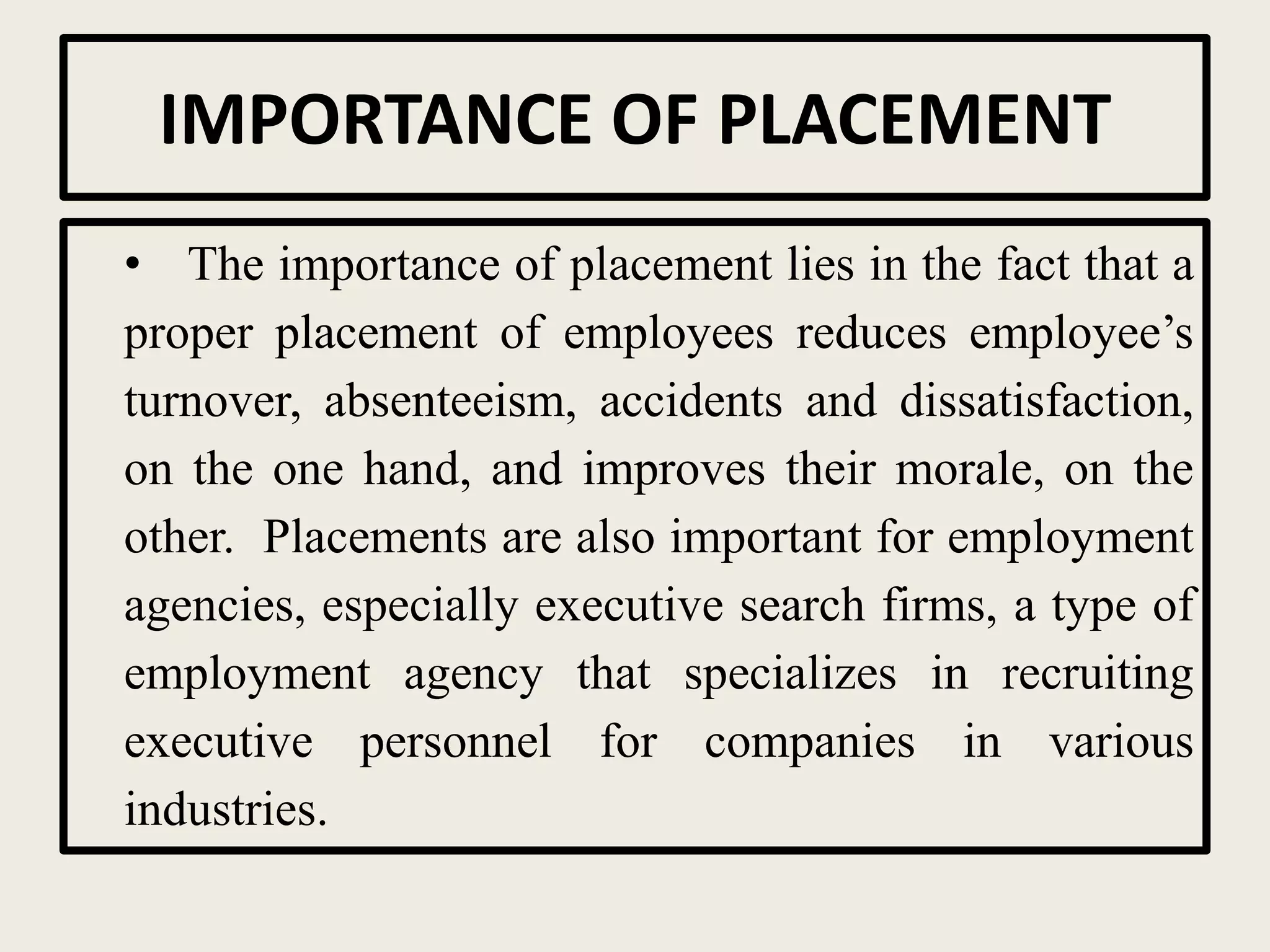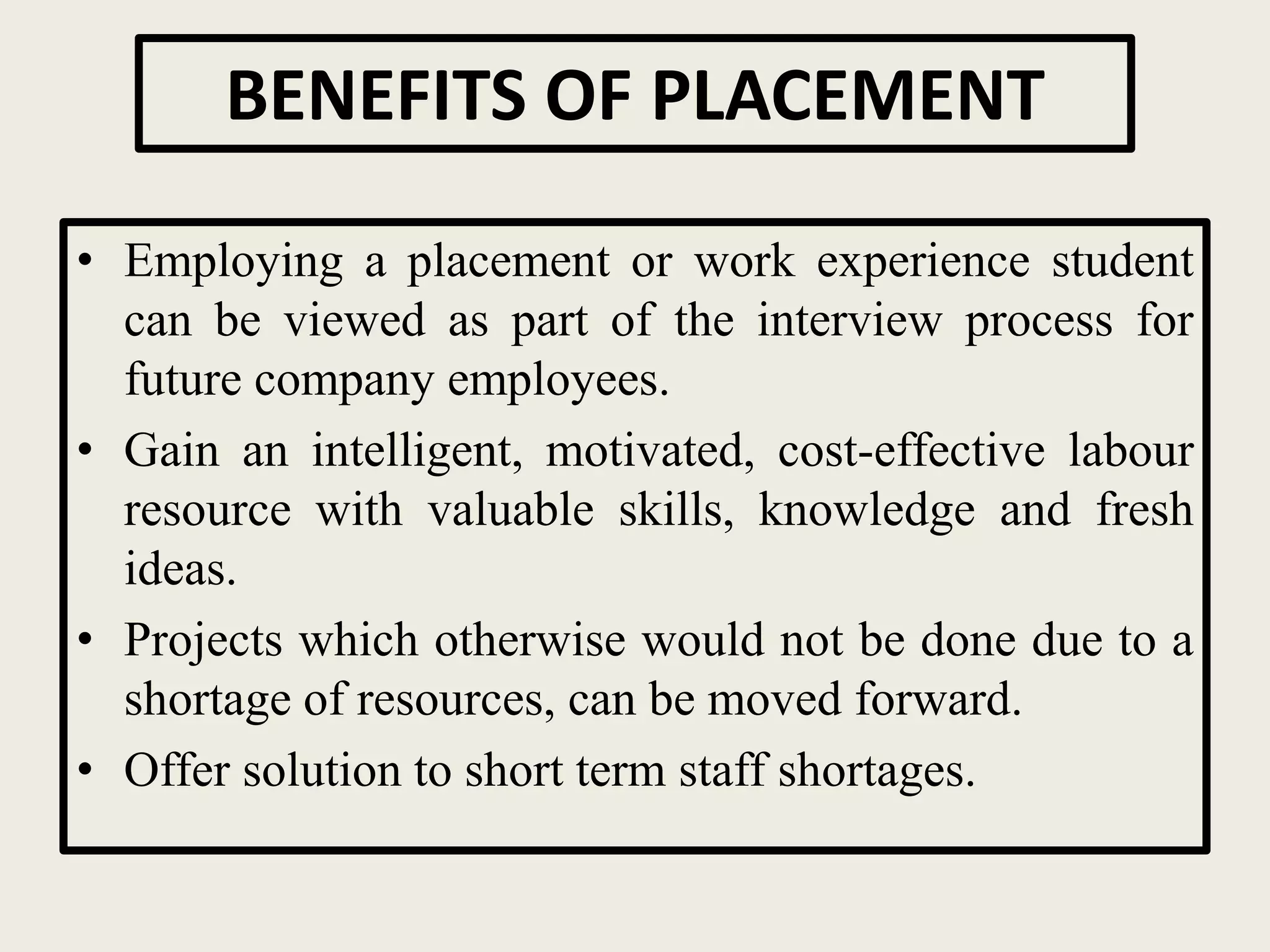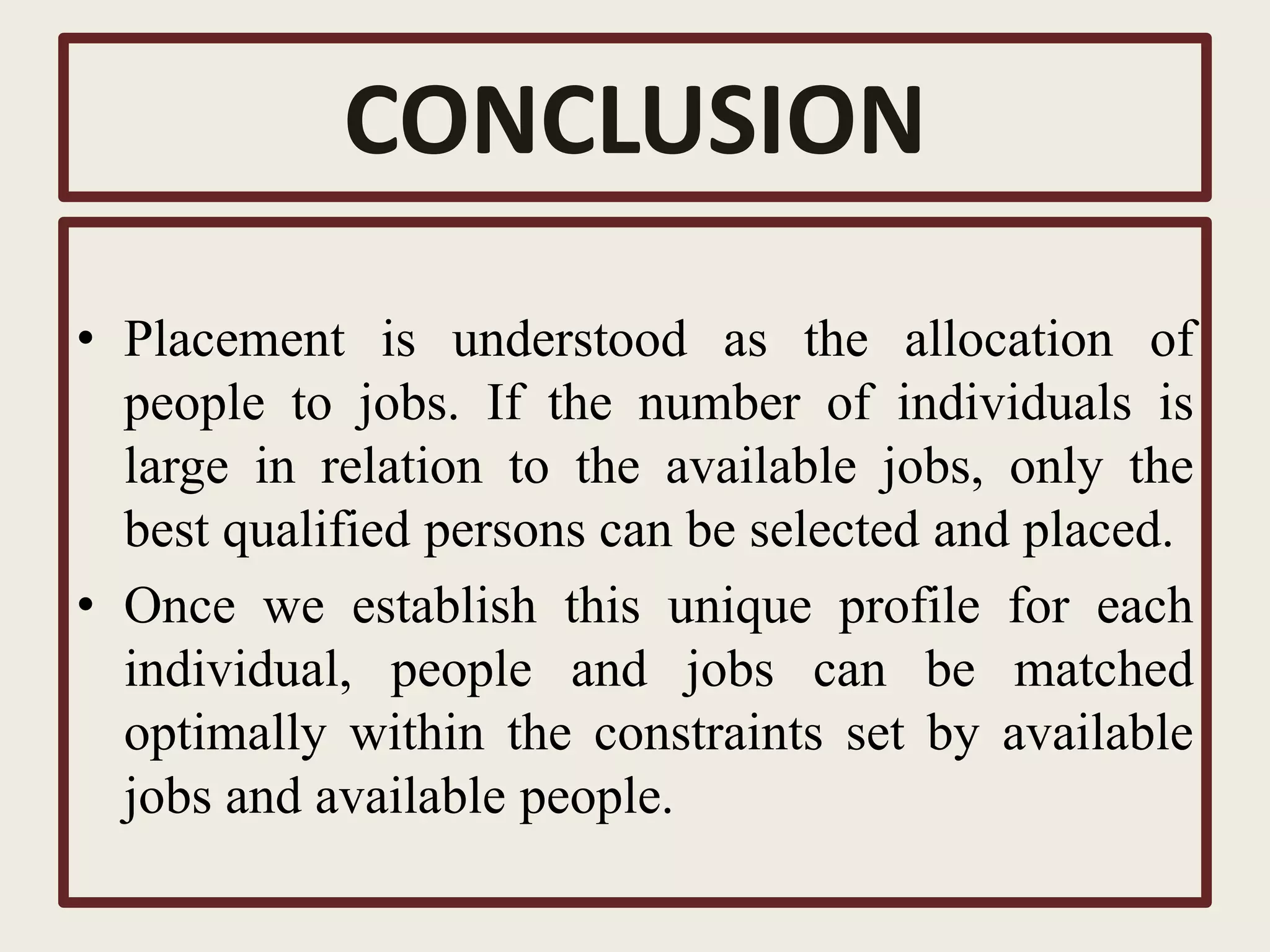Placement involves assigning employees to jobs based on their qualifications and the job requirements. It aims to reduce turnover and improve employee morale. The key aspects of placement include collecting employee profiles, comparing them to job profiles, counselling and assessment, and final job assignment. Differential placement assesses an employee's suitability for multiple jobs to make the most effective use of human resources. Proper placement benefits both employees and organizations.
